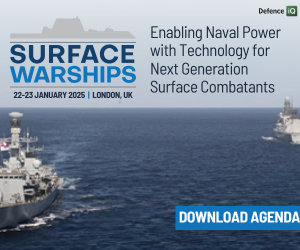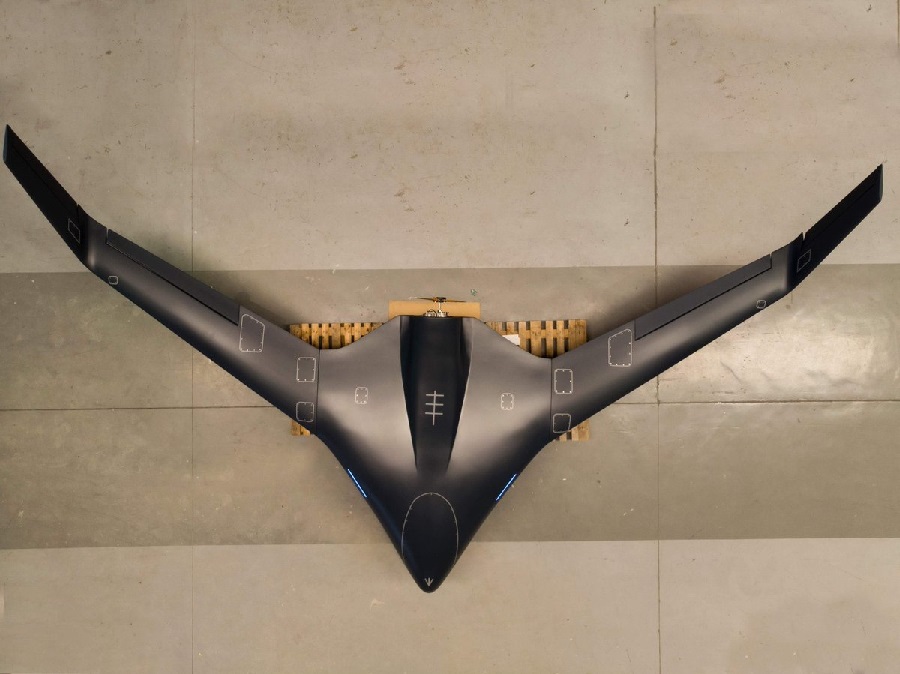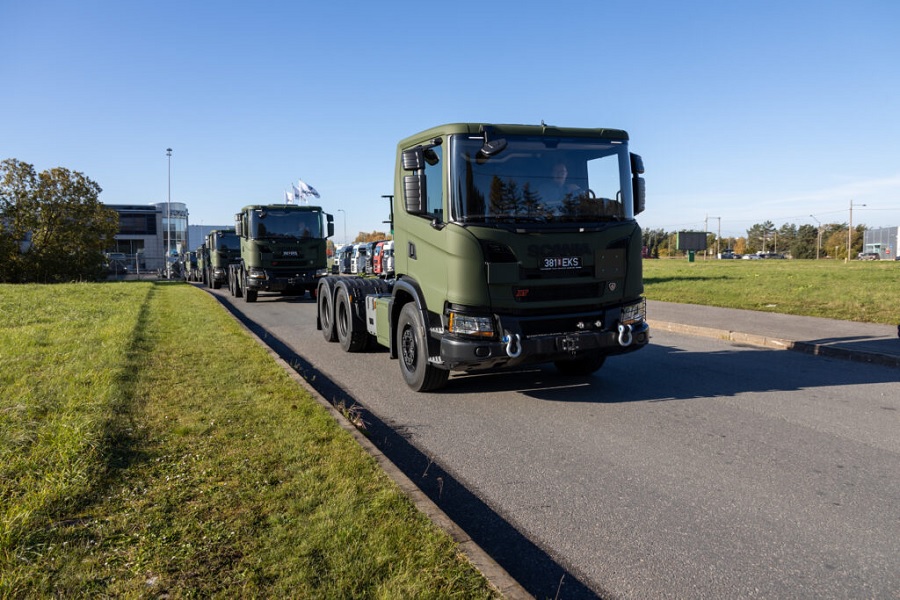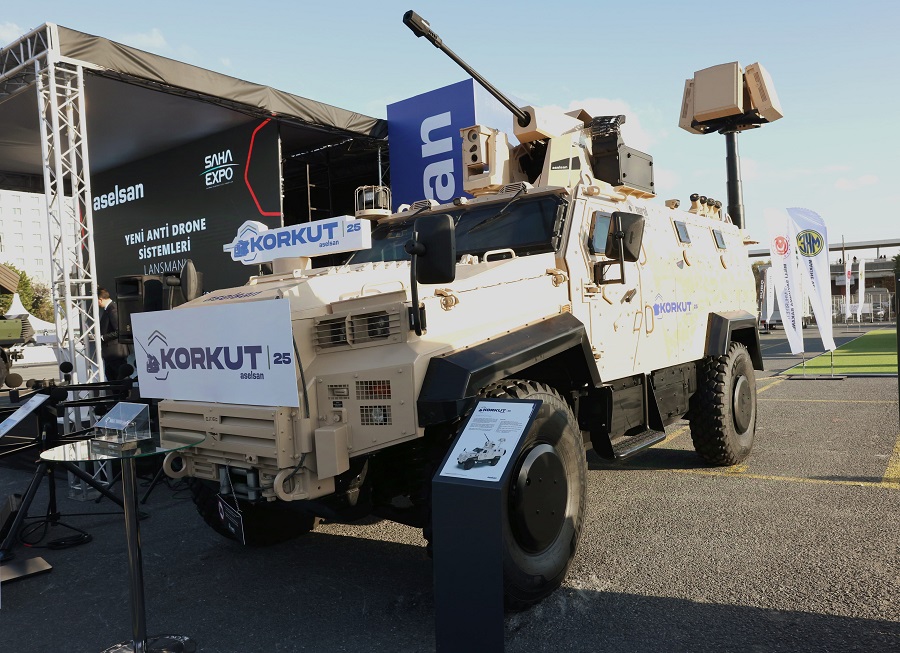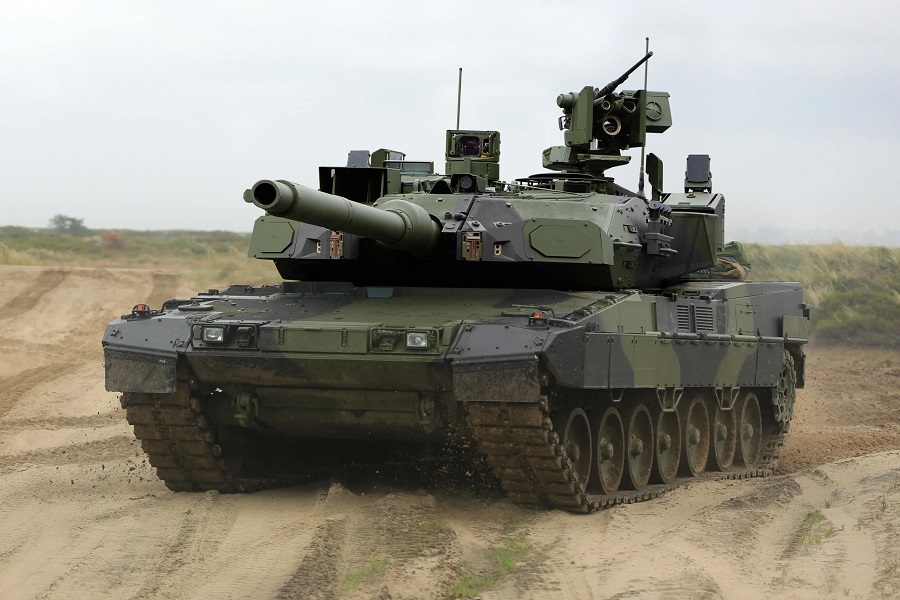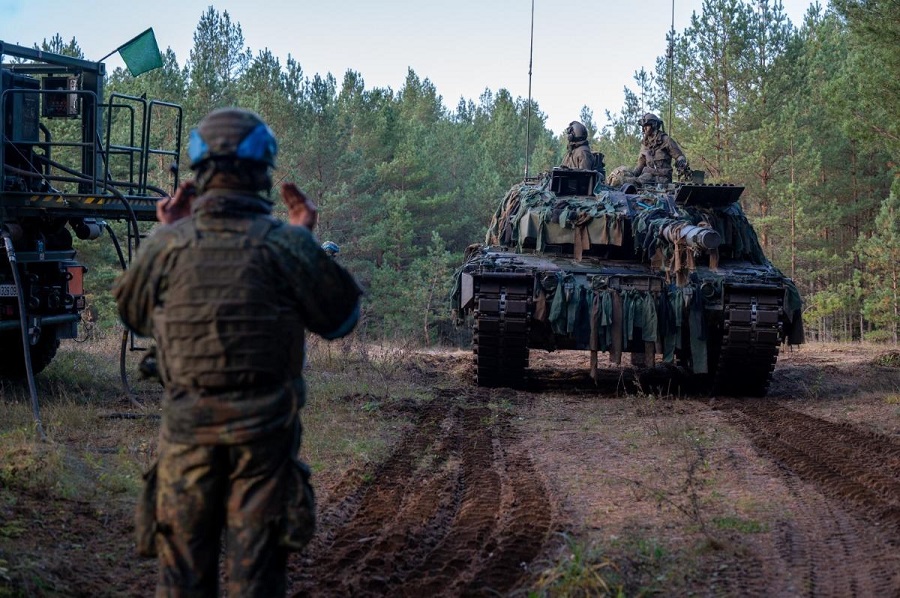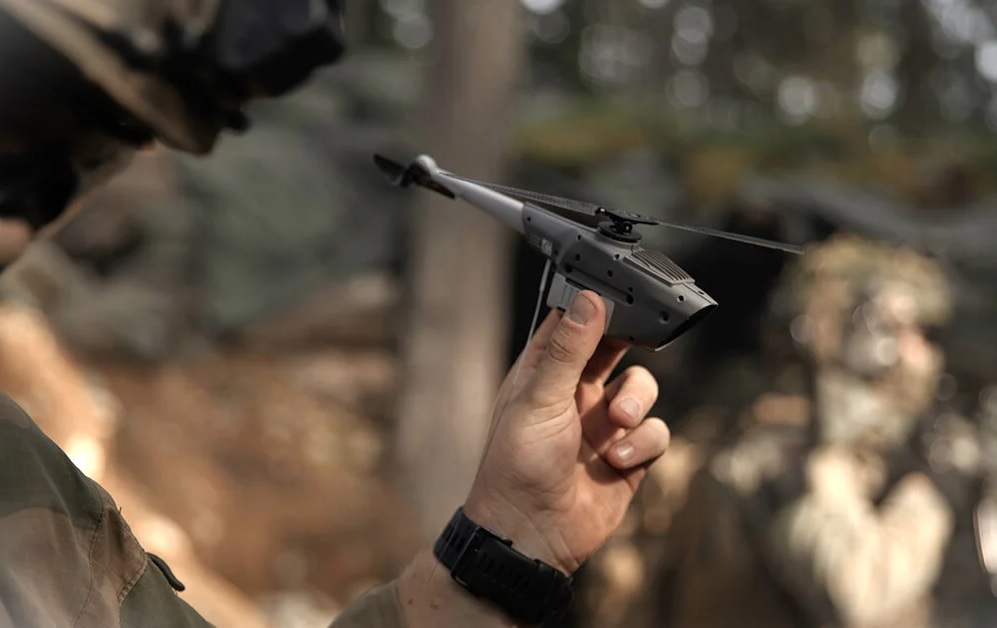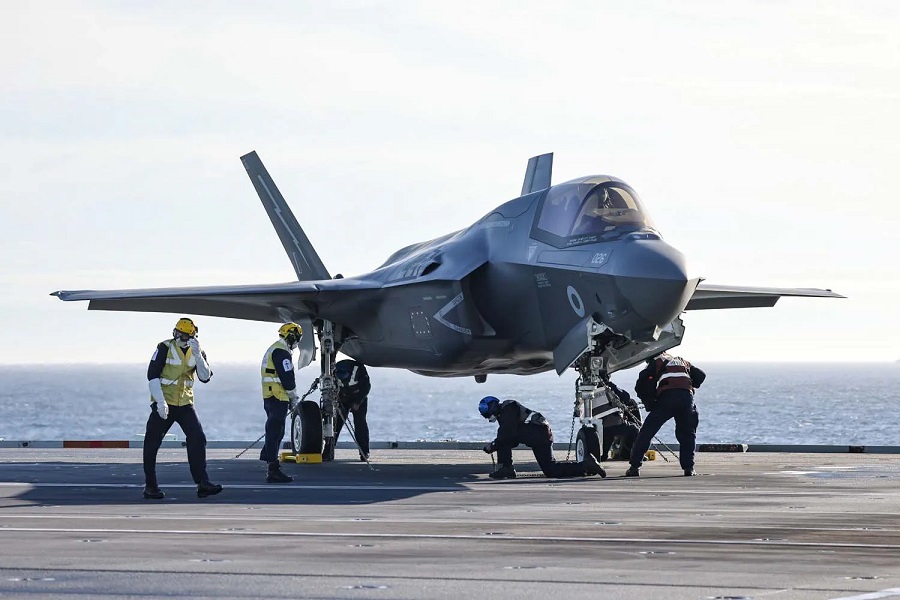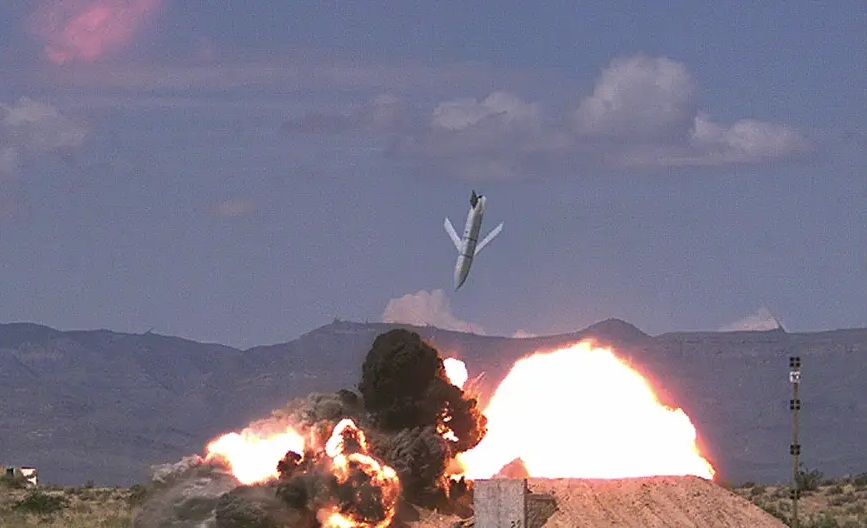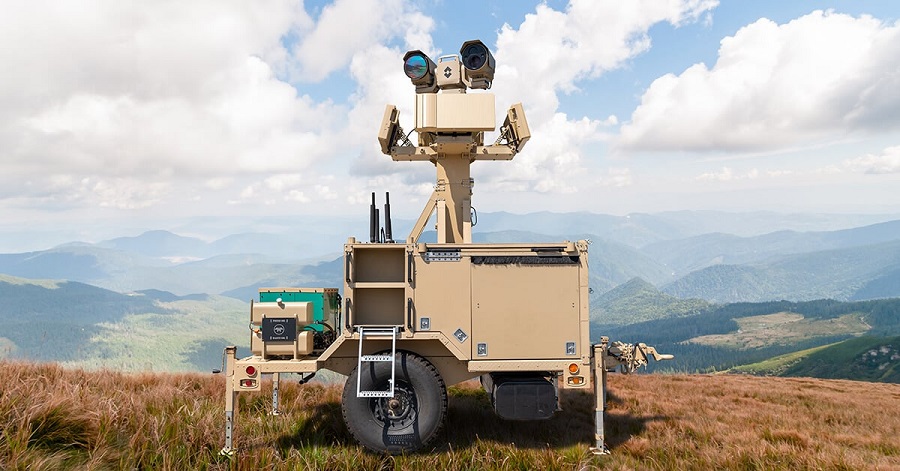GREECE AS A MEMBER OF THE EUROPEAN UNION & NATO
Greece’s military strategies and capabilities have been significantly influenced by NATO and the European Union. Since 1952, Greece has been a member of NATO, and since 1981, it has been a member of the EU. Both groups have made various contributions to Greece’s defence.
Since 1952, Greece has been a participating member and contributor of NATO. The country has taken part in a number of military actions, notably the mission in Afghanistan and other NATO exercises, like the 2019 Joint Warrior. Greece is also promoting within NATO the development of a more functional relationship between the Alliance and the European Union as the latter’s Common Security and Defence Policy develops, the strengthening of NATO-UN dialogue and cooperation, and the effort to consolidate stability in the Alliance’s southern wing through the establishment of a more constructive partnership between the Alliance and the countries of the Middle East and North Africa.
Greece’s defence has benefited from NATO’s presence through cooperative military training and exercises. For instance, the Greek Navy has taken part in several NATO maritime exercises, while the Hellenic Air Force frequently takes part in NATO air policing operations in the Baltic region. The upgrading of Greece’s armed forces has also benefited from NATO’s cooperation with that nation. Greece and the United States struck a contract in 2019 to modernize the nation’s F-16 fighter planes, which will enhance its air defence capabilities.
Moreover, Greece has participated in NATO’s deterrent strategies against possible Eastern threats like Russia. As part of its efforts to modernize its military capabilities and strengthen its defence posture in the Eastern Mediterranean, Greece signed a deal in 2020 to purchase French Rafale fighter jets. Greece also signed the renowned Franco-Greek Defence Agreement, which is also accompanied by a defence procurement deal worth €3 billion where France would provide Greece with frigates and corvettes.
Greece became a member of the European Union in 1981 and has participated actively in the CSDP from its founding in 1999. Greece has sent personnel and equipment to a number of military missions and operations overseen by the EU, including those in Somalia, Kosovo, and Bosnia and Herzegovina.

Compared to NATO, the EU’s influence on Greece’s defence has been less significant. The European Defence Fund, which strives to foster the growth of defenccce capabilities among EU member states and enhance their defence industry, has nevertheless offered financing and assistance to Greece’s defence industry.
Moreover, Greece has supported EU initiatives aimed at reducing refugee and migratory flows in the Mediterranean. Greece took part in Operation Irini, an EU initiative that intends to implement an arms embargo on Libya and stop the import of weapons, in 2020. Greece has furthermore taken part in a number of military operations that are sponsored by the EU, such as the EU Training Mission in Mali and the EU Naval Force Mediterranean Operation Sophia. Greek marine and land borders have been strengthened thanks to EU investment for border security, which has also benefitted the nation. Additionally, Greece is in charge of the EU Balkan Battlegroup, formerly known as HELBROC, and is prepared for quick deployment. The Multinational Sea Lift Coordination Center of Piraeus is available to the EU and its member states after the completion of the appropriate agreements, and as such, Greece also contributes to the operational facets of the CSDP in the maritime sector.
In conclusion, Greece’s defence has been significantly impacted by both NATO and the EU. With cooperative military exercises, training, and the upgrading of Greece’s armed forces, NATO has significantly aided in the country’s defence. The EU’s influence has been relatively modest, but it has given Greece’s defence industry funds and support, as well as the chance to take part in military operations under EU command.
THE HELLENIC DEFENCE & SECURITY SECTOR
Protecting Greece’s security and sovereignty is under the purview of the country’s defence and security industry. It consists of a variety of institutions and groups, such as the Hellenic Armed Forces, the Hellenic National Defence General Staff, and various intelligence organizations. Greek defence spending is among the highest in the EU and the first among NATO countries with the highest defence expenditure as a share of GDP, with 3.59%, as of 2021, thus demonstrating the nation’s dedication to upholding a robust defensive posture.
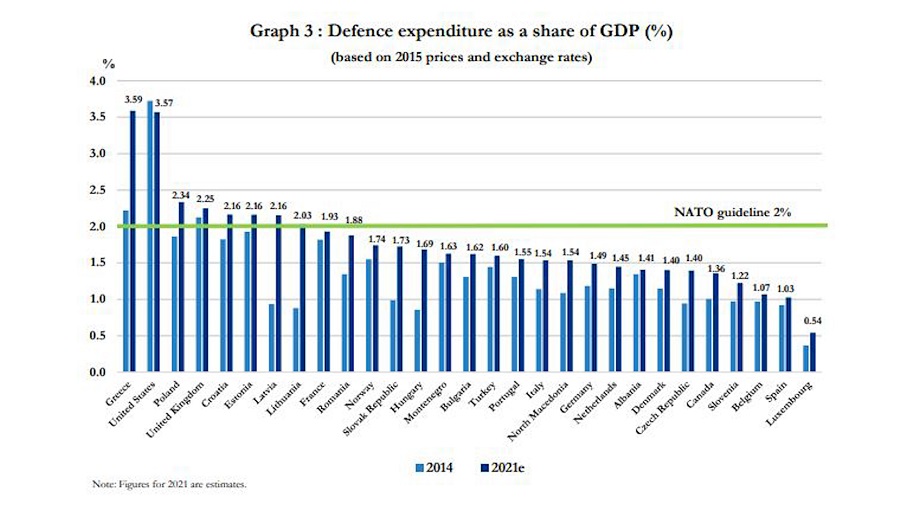
The Hellenic Army, Navy, and Air Force make up the Greek Military Forces. The largest of the three branches, the Greek Army, is in charge of operations on the ground, whereas the Greek Navy, which has a fleet of frigates, submarines, and other ships, is in charge of maritime defence. Fighter jets, helicopters, and other types of aircraft, such drones, are all part of the Hellenic Air Force, which is in charge of air defence.
Greece has a number of intelligence services in addition to its armed forces that are in charge of gathering and analyzing information to assist national security. These organizations include the Military Intelligence Directorate, the National Intelligence Service, and the Anti-Terrorism Service of the Hellenic Police. Securing the nation’s borders, notably its land and maritime borders with Turkey, is the responsibility of the Greek border control authorities. These organizations include the Greek Police’s Border Guard, the Hellenic Coast Guard’s Frontex activities, and the Hellenic Army’s Evros Land Border Surveillance System.
A sizable defence industry that manufactures a variety of military goods, including as small guns, armored vehicles, and naval vessels, is part of the Greek defence and security sector. The Greek government supports the sector by providing money and the purchase of equipment for the armed forces.
The businesses and organizations engaged in the creation, manufacture, and upkeep of military technology and equipment in Greece are referred to as the Greek defence industry. The sector has a significant impact on both the national economy and security of the nation. Greece has historically placed a high priority on defence, in part because of its geopolitical location and history. In addition to producing small guns, ammunition, and military vehicles, the Greek defence industry is renowned for its prowess in maritime and aeronautical technologies.
The Hellenic Aerospace Industry (HAI), which specializes in the design, development, and manufacture of aircraft and aerospace equipment, is one of the primary actors in the Greek military sector. The F-16 Fighting Falcon is only one of the military aircraft that HAI has produced throughout the years in collaboration with other multinational aerospace firms. The Hellenic Defence Systems (HDS), which manufactures a variety of military equipment including ammunition, rockets, and missiles, is another significant participant in the Greek defence sector. The creation of electrical and communication systems for use by the military is another activity undertaken by HDS. In addition to those, there are also the Hellenic Vehicle Industry (ELBO), a manufacturer of military vehicles, and Intracom Defense Electronics (IDE), which develops and manufactures communication and information systems.
With its procurement and research initiatives, the Greek government also contributes significantly to the nation’s defence sector. The development of the Greek armed forces as well as the nation’s procurement and research initiatives are under the direction of the Hellenic Ministry of National Defence. Overall, the Greek military and security industry is vital to preserving Greece’s independence and guaranteeing the security of its population.
THE ROLE OF MILITARY DRONES IN GREECE
Since the vertical-takeoff-and-landing drone was first displayed at the International Exhibition of Thessaloniki in September 2022, Greece has been seeking to expand its domestic drone sector. The Aristotle, Thessaly, and Democritus universities collaborated with Hellenic Aerospace Industries to produce the fixed-wing aircraft. The Archytas launch, according to representatives, was intended to be the first of a series of new items resulting from the collaboration. Archytas, a versatile drone, may be used for both military and rescue activities. It can give situational awareness throughout Greece’s land and maritime borders, monitor ground vehicles, go with frigates, and identify unmanned marine vehicles that are moving quickly. This information was provided by Hellenic Aerospace Industry. Due to the aircraft’s superior monitoring and reconnaissance capabilities, both Greek territory and its islands can be perfectly protected.
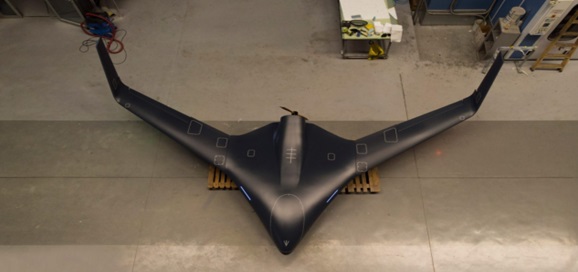
The Greek Finance Minister recently stated that efforts are continuous and growing so that Greece joins the world arena as a qualified designer and producer of high and creative technological items. The Greek Aerospace Industry, on the other hand, may take the lead in the crucial sector of high technology, which appears to be the future of how nations will protect themselves, as the Minister of Development and Investment noted. According to Greek specialists, Archytas is utilizing technology used by the United States in its distinctive fifth-generation fighter, the F-35B, which can land vertically. In addition to the vertical-take-off and landing function provided by four electric propellers, its system is reinforced with four struts, allowing the drone to cover approximately 300 km at a cruise speed of 120 kph with a flight duration capacity of four hours and land almost anywhere without using runaways. The Archytas drone is anticipated to be constructed by the end of 2023 and deployed by the Greek Military Forces as early as March 2024, after all essential testing for flying characteristics and mission operations are completed. The Military Forces and Civil Protection organizations might both deploy the UAV, which will have many functions.
Greece plans to create a second, more advanced drone using the work and know-how garnered from the “Archytas” initiative, which resulted in the country’s first Unmanned Aerial Vehicle. The Hellenic Aerospace Industries and a number of notable Greek universities, including the Aristotle University of Thessaloniki, the Democritus University of Thrace, and the University of Thessaly, signed a Memorandum of Collaboration in January to finance the building of the new Grypas drone.
The Grypas is the second platform to emerge from that collaboration, with the addition of the University of Patras. While the drone’s development will follow a similar pattern to the Archytas project, its design will be built on a separate operational concept to adapt to multiple mission requirements. The Archytas will undertake reconnaissance and surveillance over Greek islands, whilst the Grypas will be a versatile system ready for combat missions. The first phase of the Grypas project is expected to be completed within the next two years, by 2025, and will deliver a scaled version for the Greek Military Forces. Once operational, the systems will most likely be stationed at the recently rebuilt Larissa air base, which serves as the headquarters for the Heron and Pegasus II UAV squadrons.
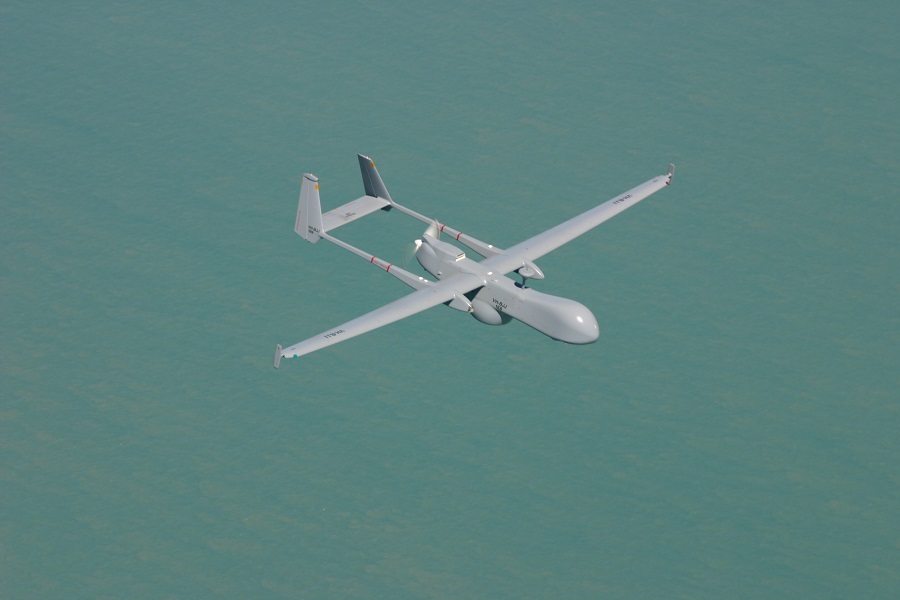
Nevertheless, the debut of Greece’s new surveillance drone has piqued the curiosity of foreign observers and other EU member states. This was owing to Greece’s decision to create its own surveillance drone program in addition to the joint EuroMALE initiative led by France, Germany, Italy, and Spain. Finally, the recent announcement that Greece has obtained a $1,5 billion package from the United States to update and enhance its F-16 aircrafts serves as a reminder of why a solely European defence project is unlikely to realize in the immediate future.
THE GREEK ANTI-DRONE INSTALLATIONS
Turkey’s drones pose a significant issue for Greece, which has just lately begun to handle with Israeli expertise. During the course of 2022, Greece has discreetly erected a veritable umbrella against hostile unmanned aerial vehicles over islands and other critical areas around the country. The systems employs Israeli technology to blind drones and interrupt their flight patterns; it is essentially a version of an anti-UAV system with capabilities comparable to Israel’s Drone Dome, but tailored to the unique demands of Greece and the topographical geography of the islands and other border regions.

The Drone Dome, built by Israel’s Rafael Advanced Defense Systems, specializes in fighting hostile drones and may eliminate drones by jamming their communications and GPS. It employs an invisible 10-kilowatt laser capable of downing drones from up to two kilometers distant for fully autonomous drones. Defence cooperation between Greece and Israel has lately grown. In 2021, the two nations inked the largest defence contract in their history, worth $1.68 billion, which included the acquisition of M-346 training aircraft and the establishment of a flying school in Greece. As a result, it is not unexpected that Athens has purchased the Drone Dome and probably other comparable Israeli systems.
CONCLUSION
Greece’s Defence Minister affirms the decision to further strengthen the country’s defensive capabilities, welcoming choices for new corvettes, guided missile purchase from Israel, and improvements to the country’s Block 50 F-16 fighter planes and Leopard combat tanks. Nevertheless, ties with France and the United States are improving, with the Americans interested in incorporating Greece in the next-generation F-35 fighter aircraft program, while Athens has requested that Greece be considered for unmanned aerial vehicles and high-value operational armaments.
Finally, Greece has always been a forerunner in European defence. Greece has always supported European defence efforts and, as a member of the Permanent Structured Cooperation, has taken responsibility and leadership for six significant PESCO programs.
RESOURCES:
- NATO (2022). Defence Expenditure of NATO Countries (2014-2022). Available at: https://www.nato.int/nato_static_fl2014/assets/pdf/2022/6/pdf/220627-def-exp-2022-en.pdf
- Hellenic Ministry of National Defence. (2020). Departmental Organisation. Available at: https://www.mod.mil.gr/en/departmental-organisation/
- Hellenic National Defence General Staff. (2021). History. Available at: https://geetha.mil.gr/en/history/
- National Intelligence Service. (n.d.). Available at: https://www.nis.gr/en/agency/objective8
- (n.d.). Operation Poseidon. Available at: https://frontex.europa.eu/we-support/main-operations/operation-poseidon-greece-/
- Hellenic Ministry of Citizen Protection. (2022). Hellenic Police. Available at: https://www.astynomia.gr/hellenic-police/?lang=en
- Hellenic Aerospace Industry. (2020). The Hellenic Aerospace Industry S.A. (HAI) is the leading aerospace and defense industry of Greece. Available at: http://www.haicorp.com/en/the-company-en/profile-en
- Hellenic Defence Systems. (2020). ).” Army Technology. Available at: https://www.eas.gr/en/the-company/
- Intracom Defense Electronics. (n.d.). Defense News. Available at: https://www.intracomdefense.com/the-company/
- Hellenic Vehicle Industry. (2020). ELVO. Available at: https://elvo.gr/
- (n.d.). Greece and NATO. Available at: https://www.nato.int/cps/fr/natohq/declassified_181434.htm
- Carassave, A. (2021). Greece, France Seal Strategic Defense Deal, Angering Turkey. Voice of America. Available at: https://www.voanews.com/a/greece-france-seal-strategic-defense-deal-angering-turkey-/6255367.html
- Permanent Representation to NATO. (2023). Greece in NATO. Hellenic Ministry of Foreign Affairs. Available at: https://www.mfa.gr/brussels/en/permanent-representation-nato/greece-in-nato/
- Hellenic Ministry of Foreign Affairs. (2017). Common Security and Defence Policy (CSDP). Available at: https://www.mfa.gr/brussels/en/permanent-representation-nato/greece-in-nato/
- Hellenic Ministry of Foreign Affairs. (2023). Greece in the EU. Available at: https://www.mfa.gr/en/foreign-policy/greece-in-the-eu/
- Gosselin-Malon, E. (2022). Greece unveils new surveillance drone to keep tabs on its islands. Defense News. Available at: https://www.defensenews.com/global/europe/2022/09/23/greece-unveils-new-surveillance-drone-to-keep-tabs-on-its-islands/
- Kokkinidis, T. (2022). Greece’s First Unmanned Aerial Vehicle “Archytas” Ready for Service. Greek Reporter. Available at: https://greekreporter.com/2022/06/16/greece-unmanned-aerial-vehicle-archytas-ready/
- Kokkinidis, T. (2023). Greece to Build New Advanced Drone Called ‘Griffin’. Greek Reporter. Available at: https://greekreporter.com/2023/01/13/greece-advanced-drone-griffin/
- Gosselin-Malon, E. (2023). Greece builds first locally made combat drone. Defense News. Available at: https://www.defensenews.com/unmanned/2023/01/24/greece-builds-first-locally-made-combat-drone/
- Pons, J. (2022). Spain partners with Germany, France and Italy to build Europe’s largest military drone. Atalayar. Available at: https://atalayar.com/en/content/spain-partners-germany-france-and-italy-build-europes-largest-military-drone
- Iddon, P. (2022). Greece Is Deploying Israeli Systems To Counter Turkish Drones. Forbes. Available at: https://www.forbes.com/sites/pauliddon/2022/07/03/greece-is-deploying-israeli-systems-to-counter-turkish-drones/?sh=1f5b4d89165e
- Nedos, V. (2022). Further reinforcement of Greek defensive capabilities. Kathimerini. Available at: https://www.ekathimerini.com/opinion/interviews/1179080/minister-announces-further-reinforcement-of-greek-defensive-capabilities/

